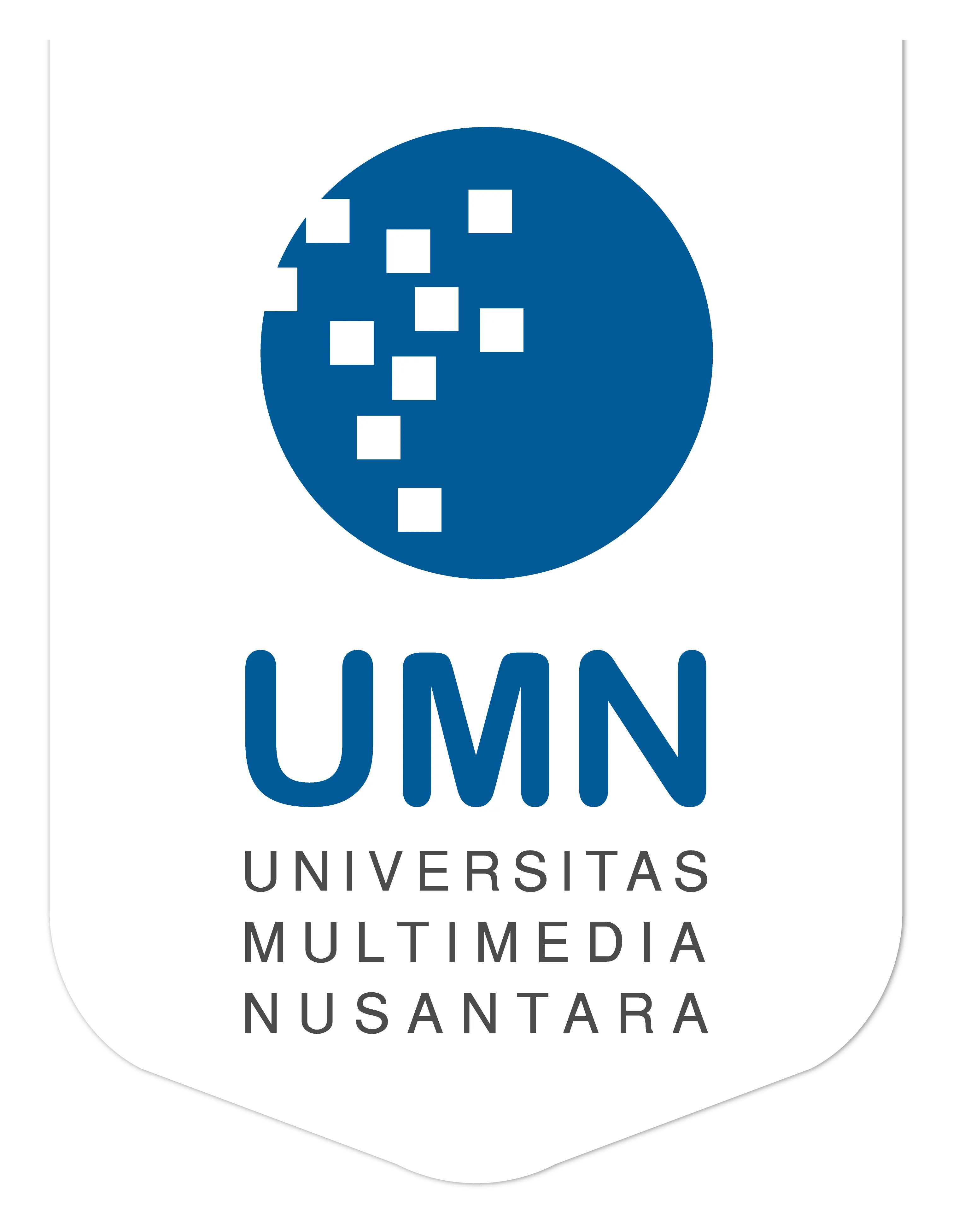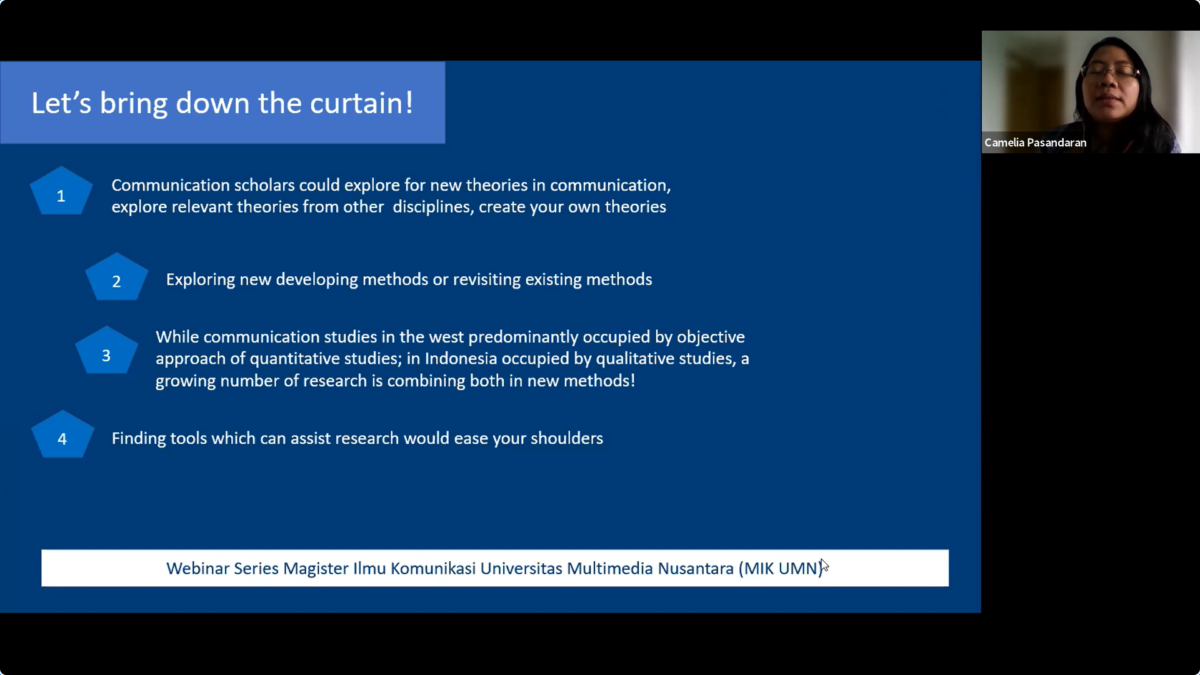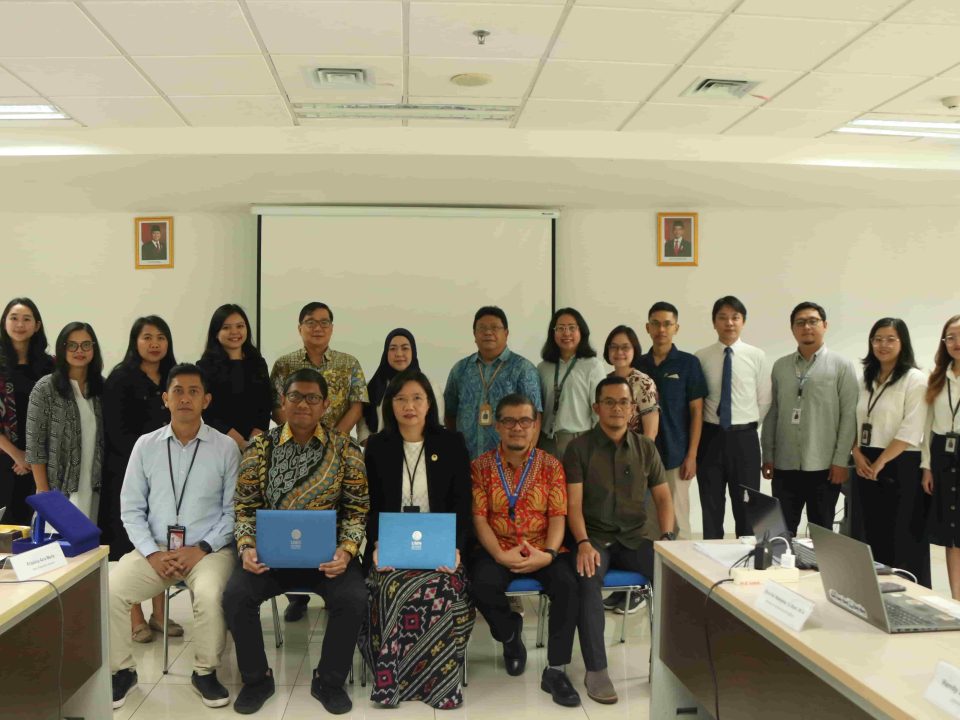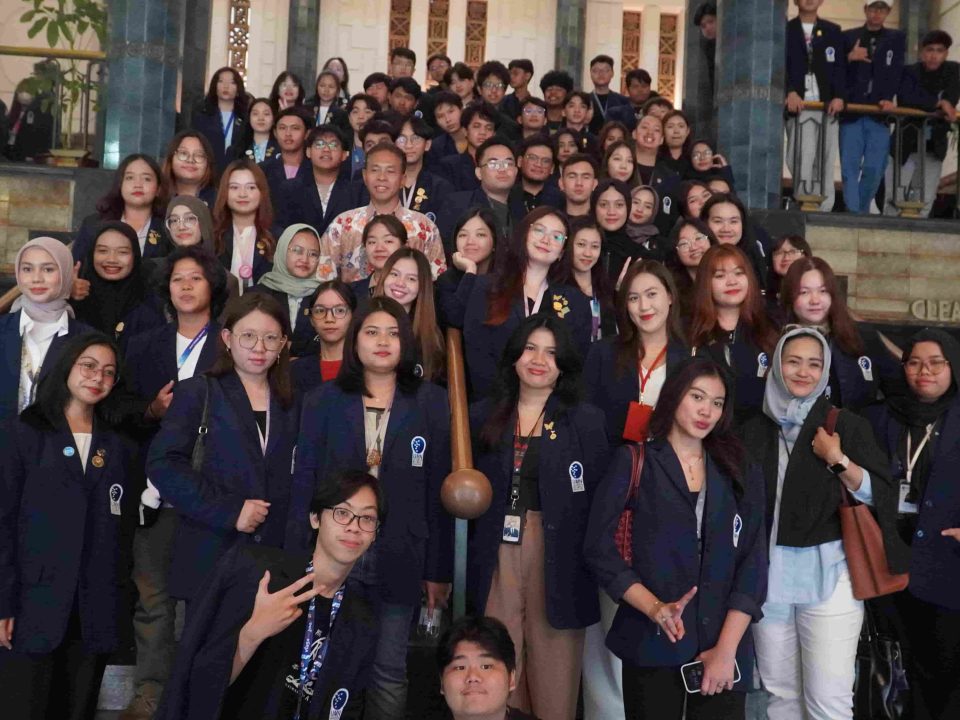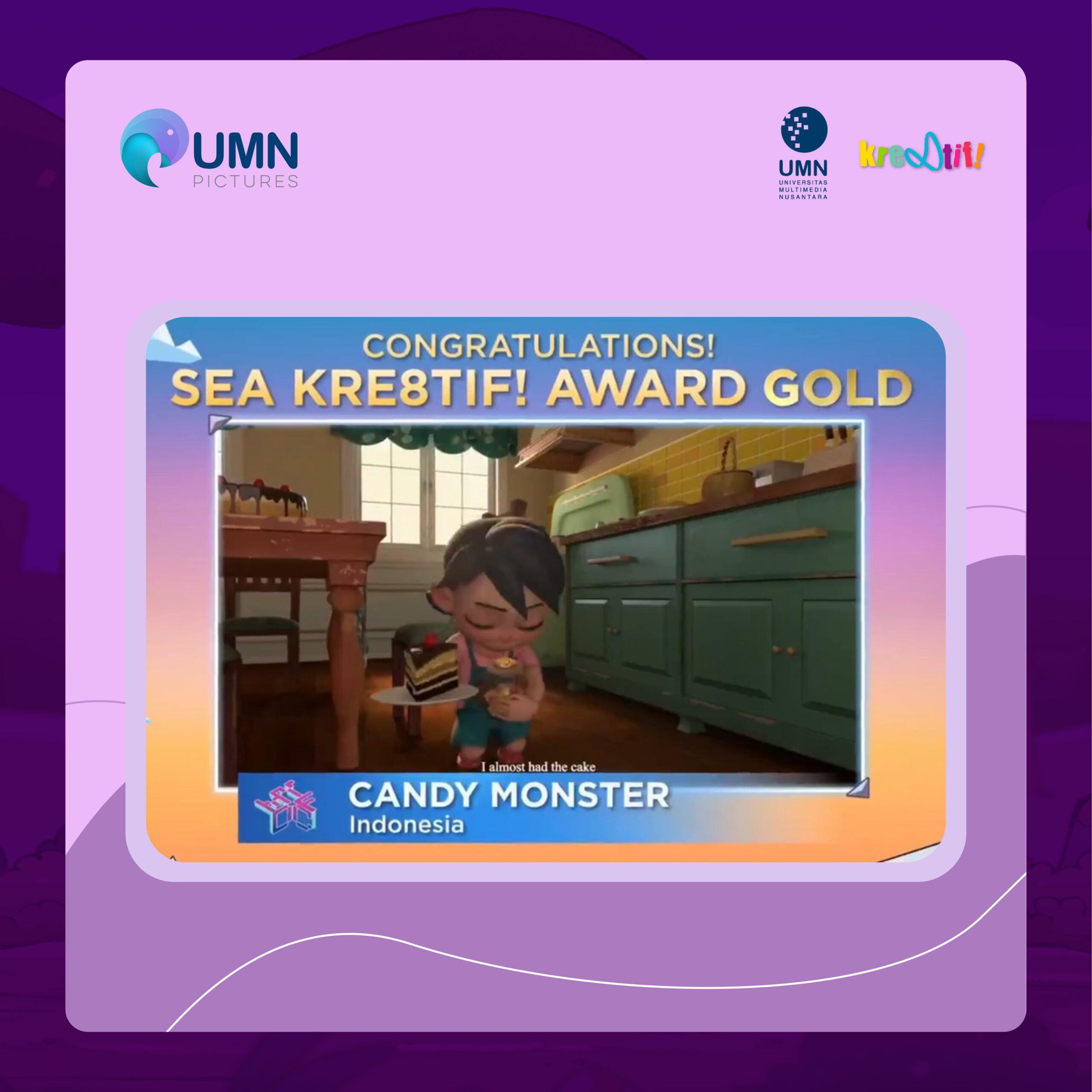
Congratulations! Candy Monster from UMN Pictures Receives Another Award
March 22, 2022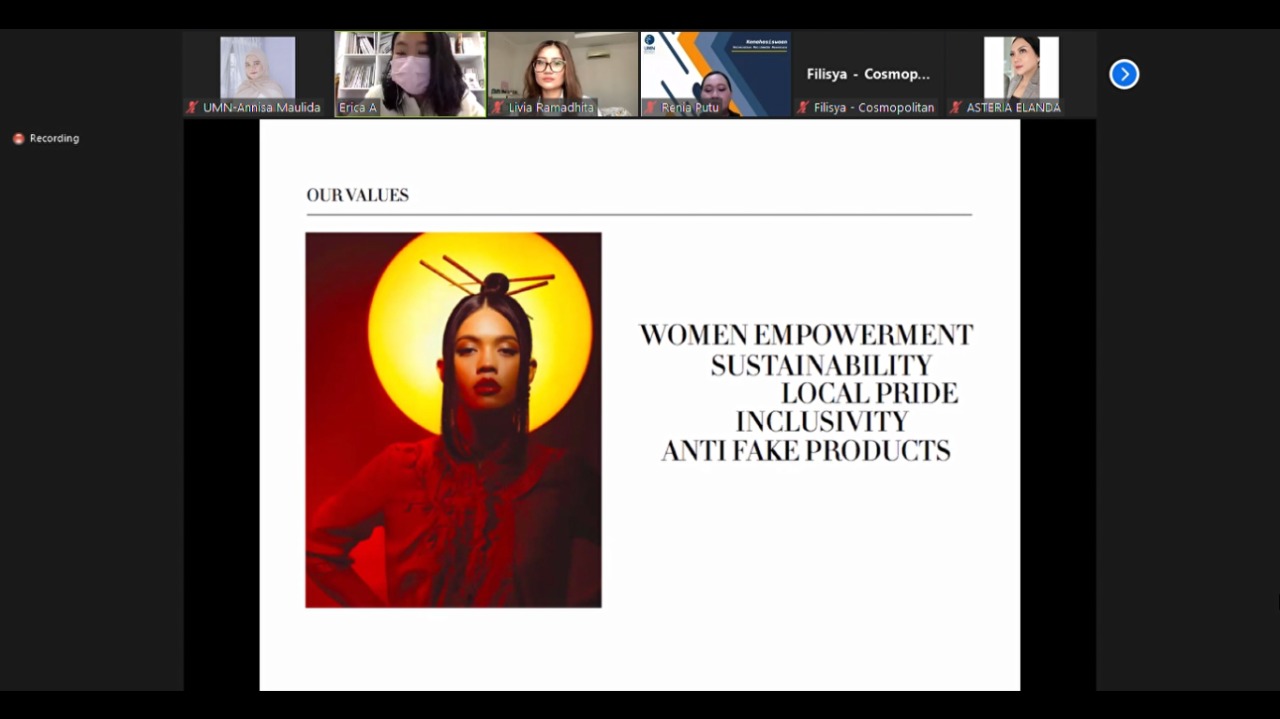
Sharing Session in The Citizen Journalism Program: The Joys of Writing With The Harper’s Bazaar and Cosmopolitan’s Editorial Team
March 22, 2022
Nilai kebaruan menjadi salah satu unsur yang kurang dieksplor di penelitian komunikasi di Indonesia (dok. UMN)
TANGERANG – Why is social research in Indonesia rarely published in international journals? This topic tries to be answered through a webinar held by the Postgraduate Masters Program in Communication Science, UMN, themed “Current Trends in Communication Research” on Thursday (10/3).
Lecturer of Master of Communication Science at UMN, Dr. Camelia P., revealed a gap in the writing standards. According to her, research in Indonesia uses less varied theories and methods with no novelty value. Therefore, researchers need new glasses to see a phenomenon.
Camel’s argument coincides with the findings of Dr. Sunarto, M.Si, a postgraduate lecturer of Communication Studies at Diponegoro University. In this webinar, Sunarto also had the opportunity to share the trends in communication research in Indonesia.
Sunarto mentioned media content and media effects as topics often found in communication journals in Indonesia. The most widely used methods revolve around surveys, case studies, and framing.
There’s nothing wrong with that. Unfortunately, repetition continues to occur by only changing the object of research. Classic theories are also often used to answer the phenomenon repeatedly. Camel also added that researchers could use various theories and methods to create novelty.
“Communication research can explore new theories. There are many theories. Explore other academic disciplines or build your own theory,” Camel said.
On the other hand, Suanarto also finds that qualitative approaches are often used in communication research in Indonesia. In fact, Camel revealed that we could start by using a mixed approach to create breakthroughs.
Also read UMN 2021 Holds International Conference on Digital Communication in pandemic era
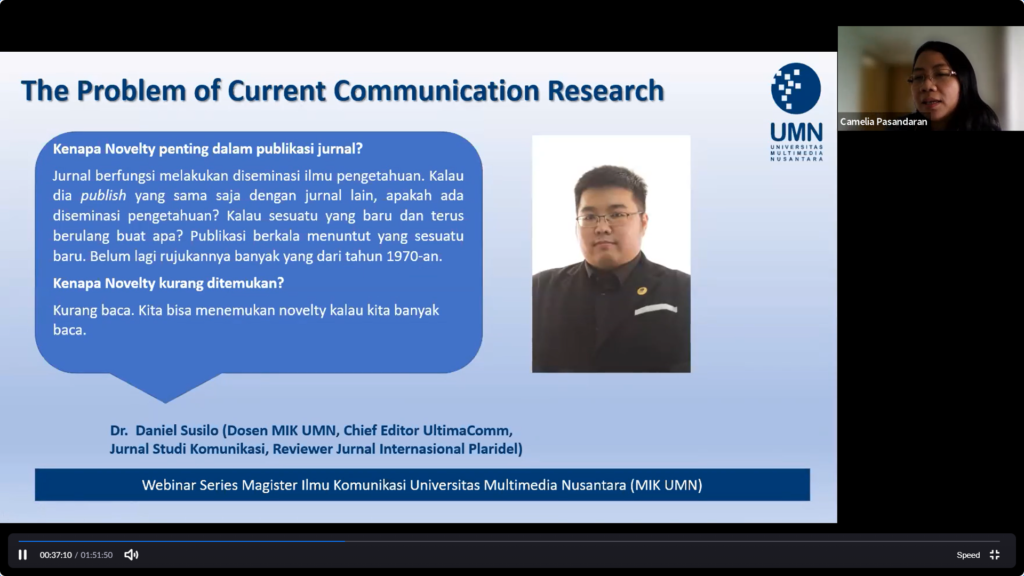
Beberapa tren riset komunikasi di Indonesia (dok. UMN)
Camel suggests mixing qualitative and quantitative approaches. By doing so, the research results obtained will also be more complete.
Researchers can also diligently read various journals to find inspiration for new theories and methods. Equally important, Camel also emphasized the importance of collaborations with other scientific fields as the key to developing new theories and methods.
For your information, the Master of Communication Studies at UMN regularly holds similar webinars to map out future communication research opportunities. Master of Communication Science at UMN is a postgraduate program with two specialisations, Digital Corporate Communication and Digital Marketing Communication.
UMN friends can visit their official social media page:
Instagram: @master.umn Or you can visit UMN’s website for more information!
*by Melinda Chang – Universitas Multimedia Nusantara News Service
Kuliah di Jakarta untuk jurusan program studi Informatika| Sistem Informasi | Teknik Komputer | Teknik Elektro | Teknik Fisika | Akuntansi | Manajemen| Komunikasi Strategis | Jurnalistik | Desain Komunikasi Visual | Film dan Animasi | Arsitektur | D3 Perhotelan | International Program, di Universitas Multimedia Nusantara. www.umn.ac.id
